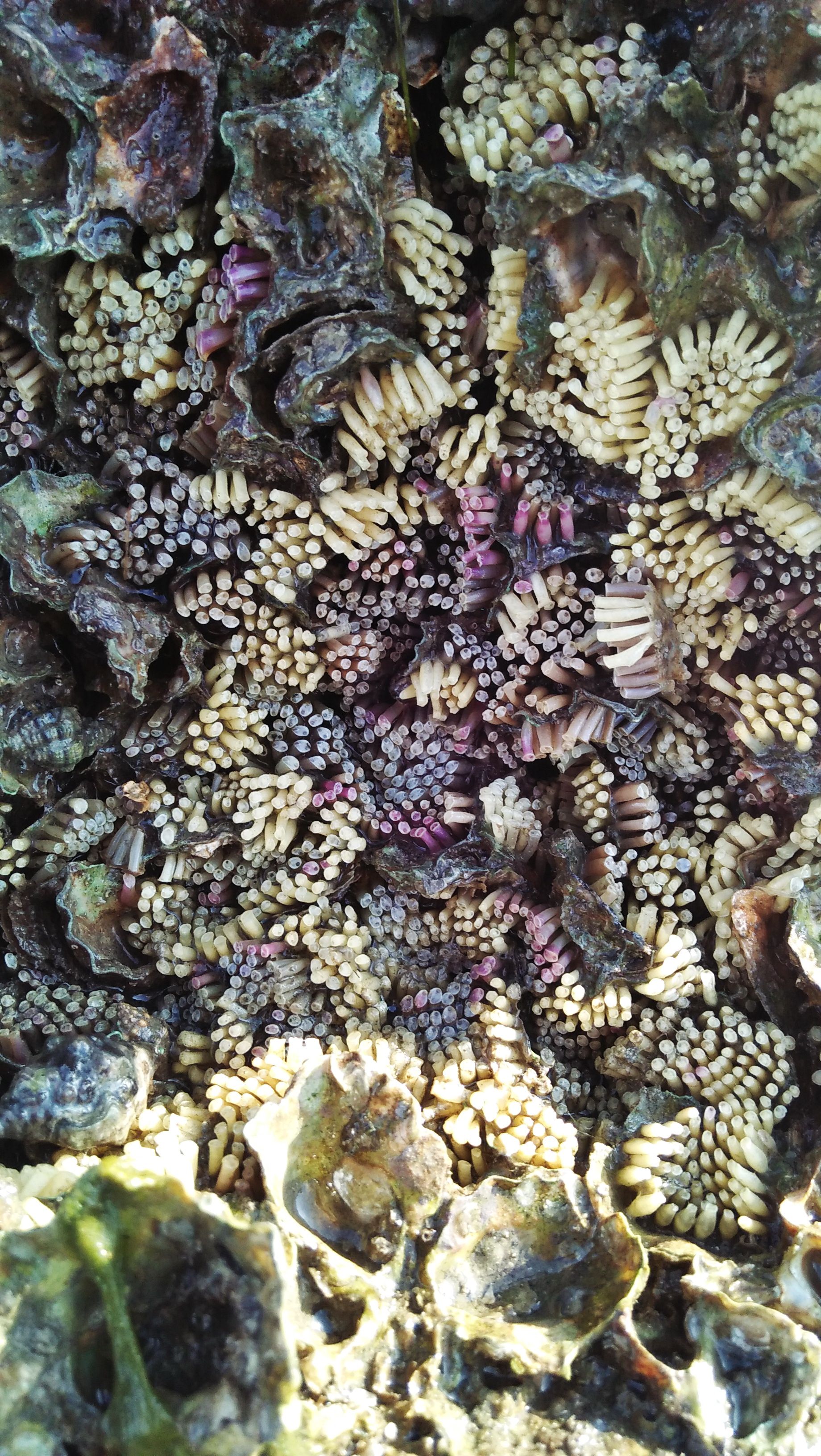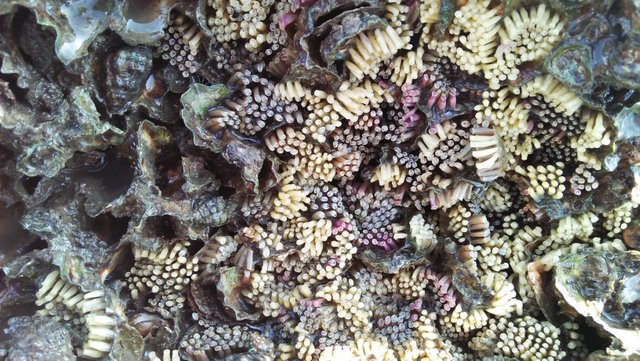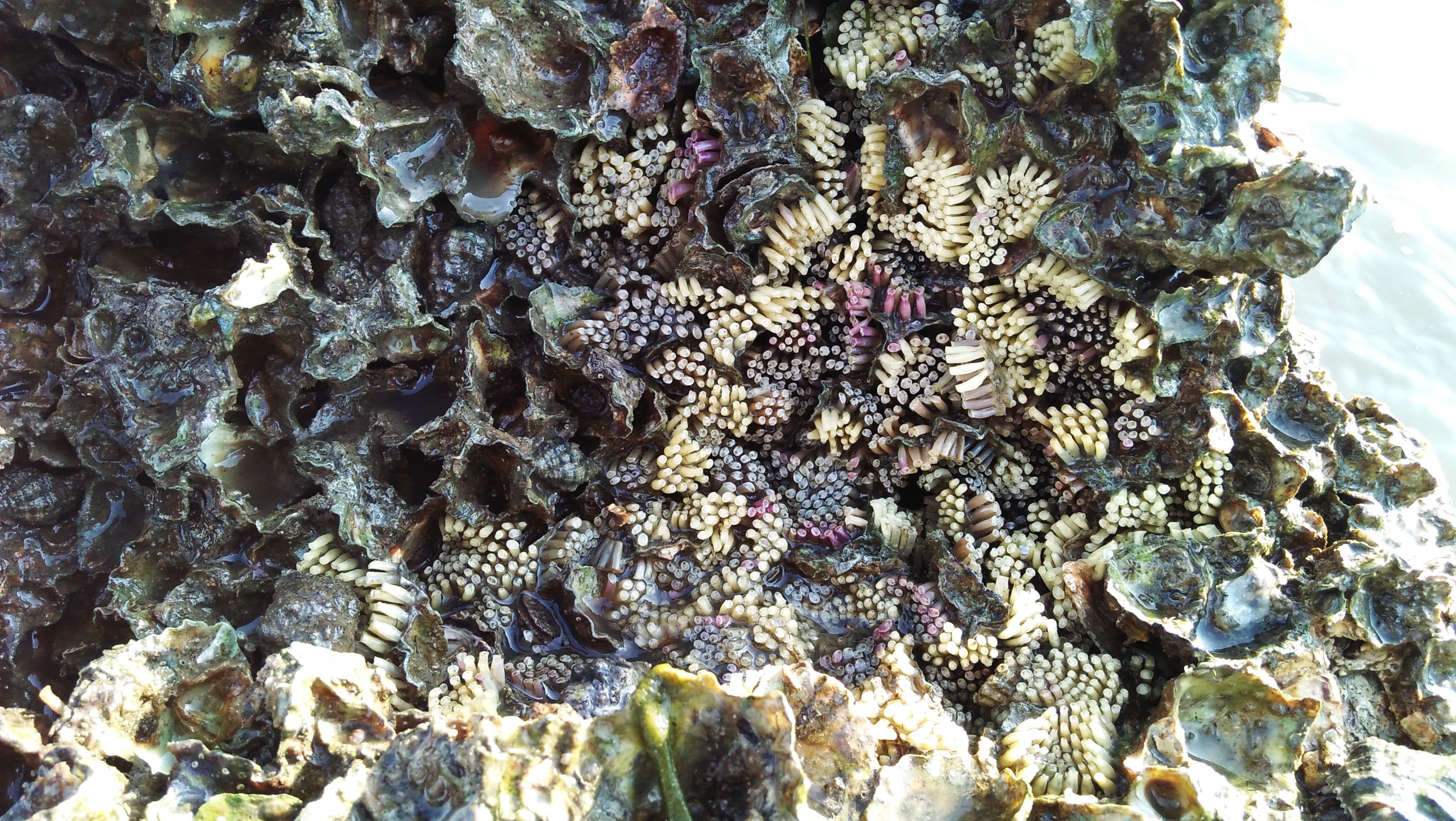Coral reefs are built by and made up of thousands of tiny animals—coral “polyps”—that are related to anemones and jellyfish. (source) At their base is a hard, protective limestone skeleton called a calicle, which forms the structure of coral reefs. Reefs begin when a polyp attaches itself to a rock on the sea floor, then divides, or buds, into thousands of clones. The polyp calicles connect to one another, creating a colony that acts as a single organism. As colonies grow over hundreds and thousands of years, they join with other colonies and become reefs. Some of the coral reefs on the planet today began growing over 50 million years ago.(source)

Coral polyps are usually nocturnal, meaning that they stay inside their skeletons during the day. At night, polyps extend their tentacles to feed.(source) Polyps extend their tentacles, particularly at night, containing coiled stinging nettle-like cells or nematocysts which pierce and poison and firmly hold living prey paralysing or killing them. Polyp prey includes copepods and fish larvae. (source)

Most coral polyps have clear bodies. Their skeletons are white, like human bones. Generally, their brilliant color comes from the zooxanthellae (tiny algae) living inside their tissues. Several million zooxanthellae live and produce pigments in just one square inch of coral. These pigments are visible through the clear body of the polyp and are what gives coral its beautiful color.(source)

About this, you can also read it here: Coral polyps.
These images were taken in a shallow waters of Aceh.
Your post is hungry, it's wonderful to be hungry
Downvoting a post can decrease pending rewards and make it less visible. Common reasons:
Submit
haha... thank you for a joke.. lol.
Downvoting a post can decrease pending rewards and make it less visible. Common reasons:
Submit
Haha its a joke sorry
Downvoting a post can decrease pending rewards and make it less visible. Common reasons:
Submit
waow wonderful post
Downvoting a post can decrease pending rewards and make it less visible. Common reasons:
Submit
thank you.
Downvoting a post can decrease pending rewards and make it less visible. Common reasons:
Submit
Nice post
Downvoting a post can decrease pending rewards and make it less visible. Common reasons:
Submit
Thanks.
Downvoting a post can decrease pending rewards and make it less visible. Common reasons:
Submit